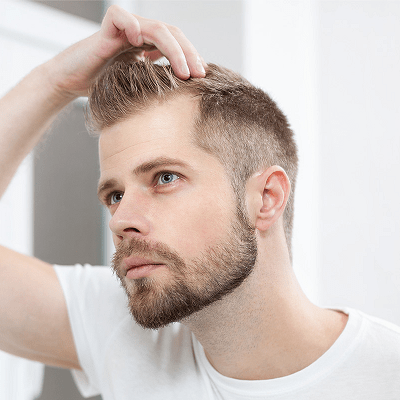Hair loss is a common concern for men and women alike, leading many to explore treatments like Finasteride, a well-known medication for combating male pattern baldness. However, one aspect that often causes anxiety among new users is the phenomenon of hair shedding. If you’ve started Finasteride and noticed an increase in hair fall, you might be wondering if the treatment is actually working or making things worse. The good news is that hair shedding on Finasteride Dubai is not only normal but can be a positive sign of hair restoration in progress.
Understanding Hair Shedding on Finasteride
Hair shedding while taking Finasteride is a temporary phase that occurs as part of the hair growth cycle. It is important to recognize that this shedding is not a sign of permanent hair loss but rather an indication that the medication is stimulating new, healthier hair growth.
The hair growth cycle consists of three main phases:
- Anagen Phase (Growth Phase): This is when hair actively grows, lasting between 2 to 7 years.
- Catagen Phase (Transition Phase): A short period where hair stops growing and prepares for shedding.
- Telogen Phase (Resting Phase): The stage where hair falls out to make way for new hair growth.
Finasteride works by inhibiting dihydrotestosterone (DHT), the hormone responsible for hair follicle miniaturization in male pattern baldness. When DHT levels decrease, hair follicles begin to recover, leading to the shedding of old, weak hairs to be replaced by stronger ones.
Why Does Hair Shedding Occur?
Hair shedding on Finasteride can be attributed to the following reasons:
- Follicle Resetting: When Finasteride reduces DHT, hair follicles that were previously shrinking begin to rejuvenate. This process pushes out old, thin hairs to make room for healthier strands.
- Stimulation of Dormant Follicles: Some hair follicles may have been in an extended resting phase due to high DHT levels. Finasteride reactivates these follicles, causing temporary shedding as they transition into the growth phase.
- Accelerated Hair Cycle: The medication speeds up the normal hair cycle, causing older hairs to fall out more quickly before being replaced by thicker and stronger strands.
How Long Does Shedding Last?
Most people experience shedding within the first few weeks to three months of starting Finasteride. This phase typically lasts between 2 to 6 weeks before the shedding gradually subsides. By the six-month mark, many users start to see noticeable improvements in hair density, and by 12 months, optimal results become more apparent.
Signs That Shedding is Normal
While shedding can be concerning, the following signs indicate that it is a part of the normal Finasteride process:
- The shedding is temporary and occurs within the first few months of treatment.
- New hair starts appearing after the shedding phase.
- Hair strands being shed are typically thinner and weaker, making way for thicker regrowth.
- Over time, the overall density of hair improves rather than deteriorates.
When to Be Concerned
Although shedding on Finasteride is normal, excessive or prolonged hair loss beyond six months should be discussed with a healthcare professional. In rare cases, some individuals may not respond well to the treatment, and other hair loss solutions may be explored.
Managing Shedding and Optimizing Results
If you’re experiencing shedding on Finasteride, here are some tips to stay positive and support healthy hair growth:
- Stay Patient: Hair growth is a slow process, and shedding is a temporary phase. Give the medication at least six months to show results.
- Maintain a Healthy Diet: A diet rich in vitamins, minerals, and proteins helps strengthen hair follicles and improve hair health.
- Use a Gentle Hair Care Routine: Avoid harsh shampoos and excessive styling that can cause unnecessary stress on the scalp.
- Consider Complementary Treatments: Combining Finasteride with Minoxidil or other hair-supporting supplements can enhance results.
- Monitor Progress: Take monthly photos to track changes and stay motivated.
The Positive Outcome
Despite the initial shedding phase, the long-term benefits of Finasteride for Hair Loss in Dubai far outweigh the temporary hair fall. Many users who stick with the treatment experience significant regrowth, improved hair thickness, and a slowdown in overall hair loss. Studies have shown that Finasteride can maintain and even regrow hair in a majority of men, making it one of the most effective treatments for male pattern baldness.
Conclusion
Shedding while on Finasteride can be an unsettling experience, but it is a normal and expected part of the hair restoration journey. Instead of viewing it as a setback, consider it a sign that the medication is actively working to improve your hair health. By understanding the process and staying committed to the treatment, you are setting yourself up for long-term success in combating hair loss and achieving a fuller, healthier head of hair.





Comments